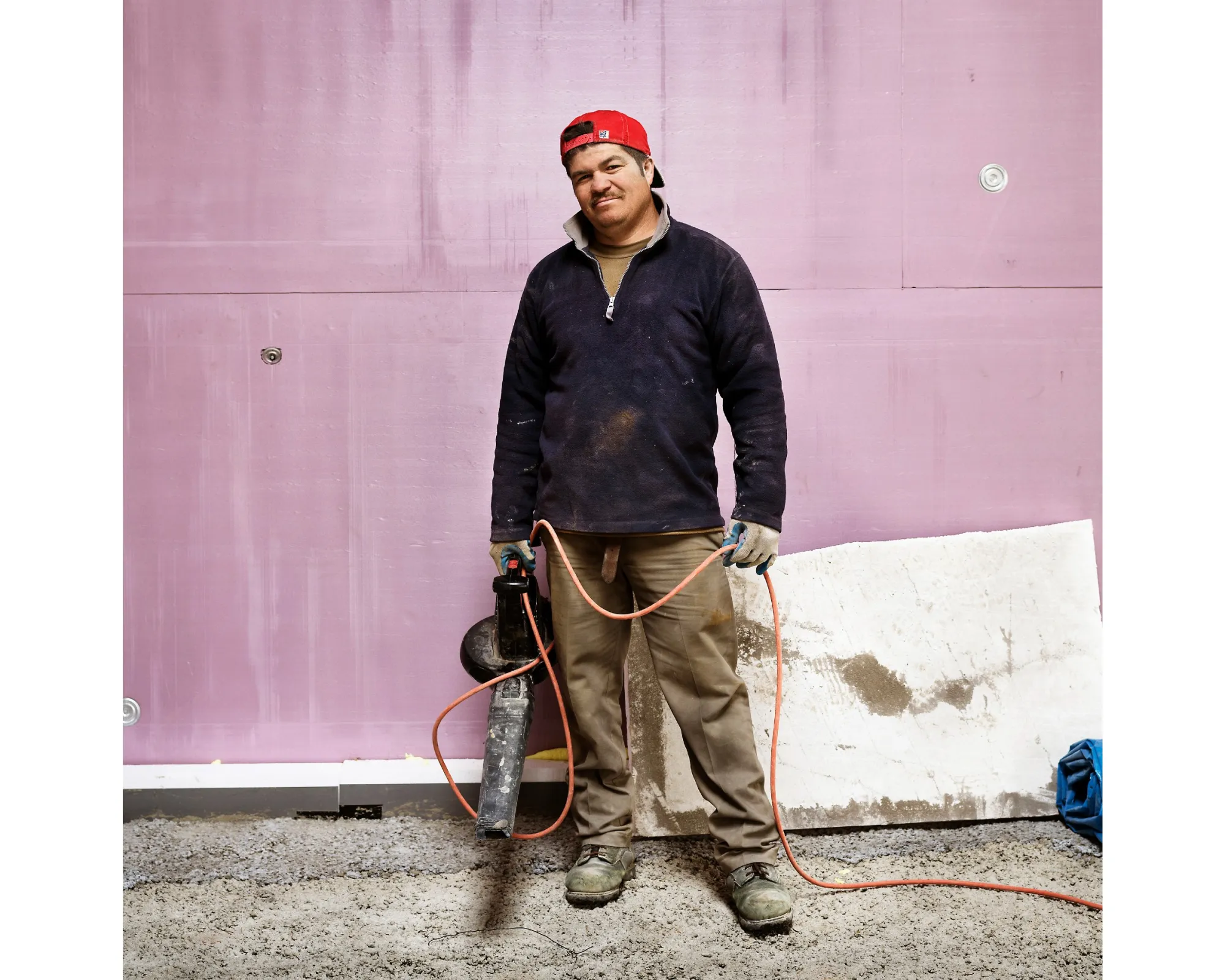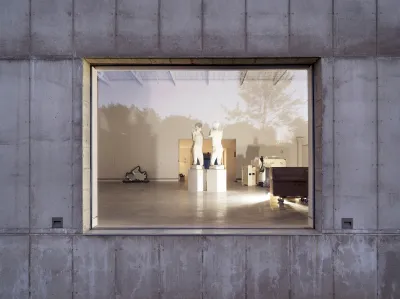
Italian photographer Marco Anelli spent ten years capturing the construction activity at Magazzino Italian Art, building upon his decades of prior experience to go beyond documentary photography.
Highlights from the decade-long commission are now on display at the museum and research center dedicated to postwar and contemporary Italian art as part of the new exhibit “Marco Anelli: Building Magazzino 2014-2024”.
The exhibition’s large-format works combine portraiture, architecture, and fine art photography. “There’s something in the complexity of the work that came out,” curator Paola Mura told ARTnews, noting her background in architecture. “It’s the capacity to build layers and into a sequence, build something that is more complex, which is a rare point. I don’t think it is easy.”
Magazzino Italian Art is located in Cold Spring, New York, approximately 50 miles north of Manhattan. The original 20,000-square-foot building for its permanent collection and research center opened to the public in June 2017. The 13,000-square-foot Robert Olnick Pavilion—which includes a space for temporary exhibitions, a multi-purpose room, cafe and store—opened last September.
Anelli initially intended to focus on the evolution of the museum’s architectural structure, however he realized the workers were incredible characters deserving of more attention. “You don’t have the chance to take this kind of portrait outside of the construction site,” Anelli told ARTnews. “The construction site is a place where people, workers, engineers, architects, every kind of people involved has to solve those problems that are within.”
The images in “Marco Anelli: Building Magazzino 2014-2024” also reflect the Italian photographer’s lifelong interest in construction. “My father was an engineer, so when I was a kid, I spent a long time in the construction site,” he told ARTnews. “A construction site is one of my favorite project topics, because it’s such a unique place. They change all the time. Photographers love the chance to take a picture of something that then you don’t have another chance to capture.”
Anelli’s portraits of the construction workers join the history of chronicling focused on working class people in Europe and the United States, but featuring lighting, framing, and consideration of clothing and equipment similar to fashion or editorial photography. “In this case, it was important for me to contextualize the worker, contextualize the construction site, put in some element connected to their job and also the construction site,” he said. “Every time, I was looking for a corner, a space, a spot, that allow me to better represent the worker.”
“Each and every one of them is characterized by a tool, something they have in their hand or in the background that is referenced to their identity and what they do,” Mura said. “There’s a pride in their face.”
Many of the construction workers at Magazzino had never been professionally photographed before. Anelli was most surprised when he asked them to pose with their preferred stance and expression. “Sometimes they have these very strong glances,” he said. “They are representing themselves but also their job in the museum.”
The Italian photographer was also in regular contact with Magazzino’s Spanish architect Miguel Quismondo, engineers, and the construction workers on a day-to-day to help plan when and what he would capture on-site. “But usually I follow the flow of the work,” Anelli said, referencing the evolution of his previous project on Italian soccer players in 2000. “Sometimes there is also different weather conditions. The most important part is to be on the field with the camera.”
Anelli’s previous photography projects focused on construction included the MilanFair, the subway in Rome and the new location of the Whitney Museum of American Art. Anelli’s other photography projects over long periods of time include capturing the restoration of the facade of St. Peter’s Basilica over three years; the restoration of the Milan Cathedral over six years; as well as musicians, conductors and composers at the National Academy of Santa Cecilia in Rome over seven years.
A shorter, but still influential project took place in 2010, when Anelli captured portraits of all 1,545 people who sat in front of Marina Abramovic over three months during the performance The Artist is Present as part of the artist’s retrospective at the Museum of Modern Art. “From that moment on, I start to include the portrait in all my projects,” Anelli told ARTnews.
The photos were later published in a book, Portraits in the Presence of Marina Abramovic, and the experience was restaged at the Sean Kelly Gallery in March 2022 for an auction on the Artsy platform benefiting Ukraine.
When ARTnews asked about favorite images in the exhibition, Mura pointed to an image Anelli had taken of Giulio Paulini’s sculpture Mimesi (Mimesis) framed by a window. Mimesi (Mimesis) is comprised of two plaster casts of the Greek messenger god Hermes, reproductions of the classical marble sculpture Hermes with the Infant Dionysus (350–330 BCE) by Praxiteles. Mura said the Art Provera sculpture was about the importance of mutual vision.
The large photo shows the construction process at Magazzino is almost finished, but the institution was still in progress. “This photograph summarized all the layers of significance that are in the museum,” Mura said.

